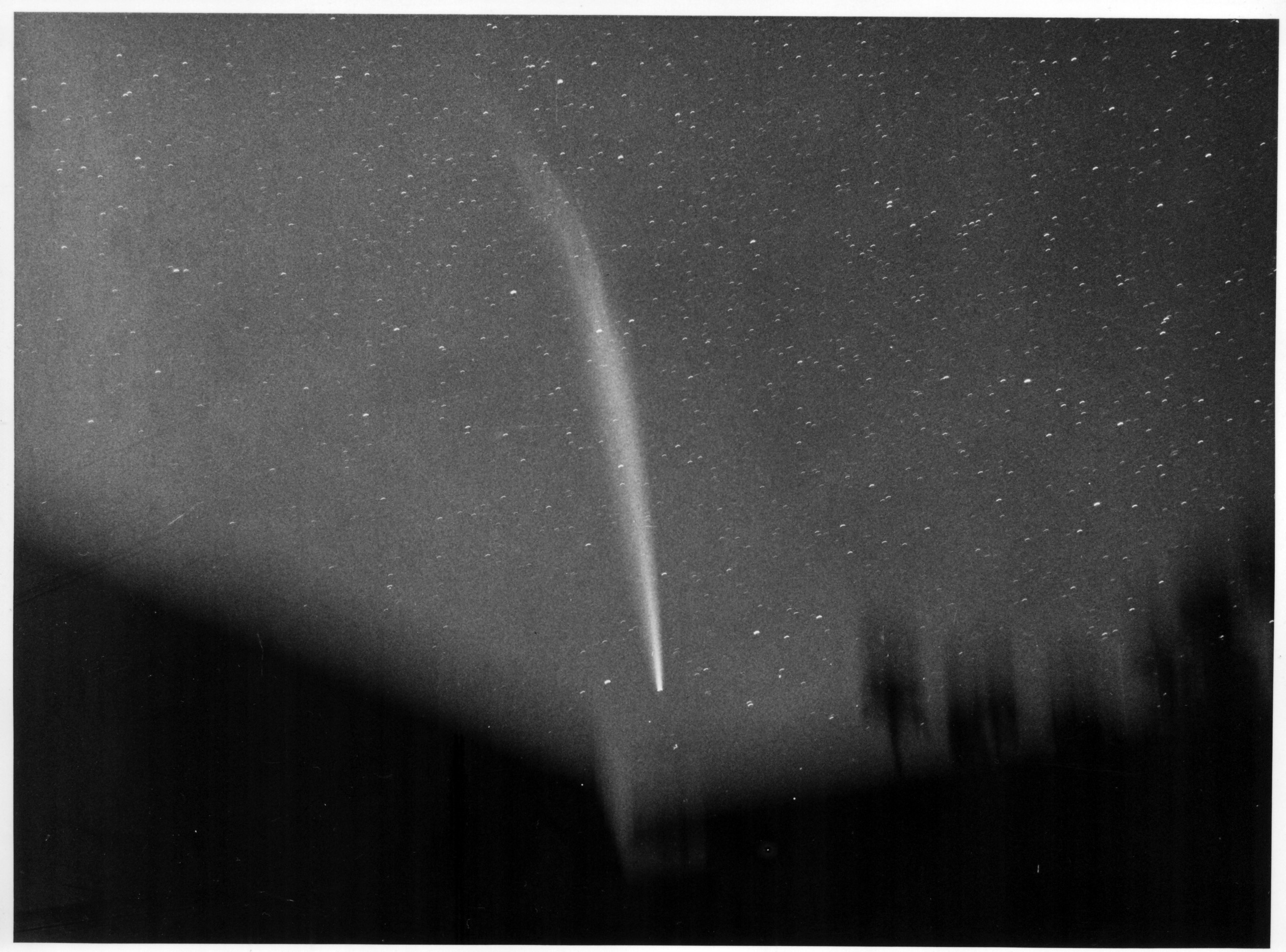Image of C/1965 S1 (Ikeya-Seki) scanned from the archive. No details on the print other than the note "McClure?" written on the back. Alan McClure was one of the best amateur comet imagers of the time. He certainly obtained images of this comet from Mount Pinos or Whittaker Peak in California. Astrometry.net plate solves as: Center (RA, Dec): (176.509, -19.092) Center (RA, hms): 11h 46m 02.056s Center (Dec, dms): -19° 05' 32.770" Size: 43.9 x 32.5 deg Radius: 27.319 deg Pixel scale: 62.6 arcsec/pixel Orientation: Up is 89.6 degrees E of N Stars are trailed but the comet's position from this image is: 12h 17m 30s, -19d 17' 21". From JPL Horizons the closest match is: Date__(UT)__HR:MN R.A._____(ICRF)_____DEC dRA*cosD d(DEC)/dt 1965-Nov-02 02:30 * 12 17 26.87 -19 16 31.3 -149.045 -96.0929 The comet was a morning object with an elongation of around 31 deg so this would have been taken near local dawn. That rules out California and Alan McClure. The comet's position and the horizon orientation indicate that the photo was taken in southern Africa at around 02:30 UT on 1965 November 2. It was then a morning object. The large field of view implies that this was taken with a short focal length lens on a 35mm or 120 format camera. The smeared horizon detail indicates that the camera was driven at (approximately) the sidereal rate although the stars and comet head are trailed a bit. The length of the smeared trees implies a driven exposure of 6-8 minutes as the comet rose. Auke Slotegraaf sent me a list of the plates taken at the Royal Observatory at the Cape but none of these really fit, either the timings or the field of view. The plates were taken for astrometry so were much larger image scale. Tim Cooper checkeds through the archived Monthly Notes of the Astronomical Society of Southern Africa for any reports of observations or images of the comet reported to the Comet and Meteor Section, at that time under the direction of S C Venter. The only visual reports recorded in that journal were by Jack Bennett and S C Venter. Neither mentions any photographs. Tim suggests that the photo could have been taken from what is now Zimbabwe (then Rhodesia). Martin Mobberley pointed out a couple of reports in the JBAA (76/2 and 76/3). In particular the second one says: "After thanking Mr McKie, the President called on Mr. Lyons to show three colour photographs of Comet Ikeya-Seki taken from Rhodesia with Kodak Retina IB using Kodachrome II, the exposure beings 10 minutes at f/3.5. Unfortunately the photos are not reproduced in the Journal. |

Page last updated: Sun 2 Apr 07:59:41 BST 2023